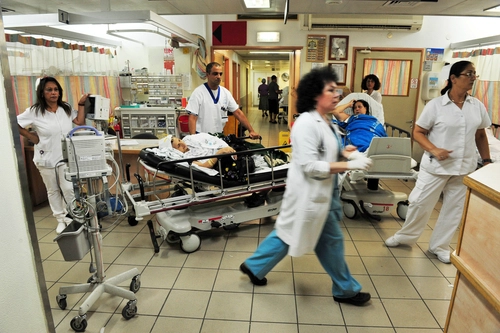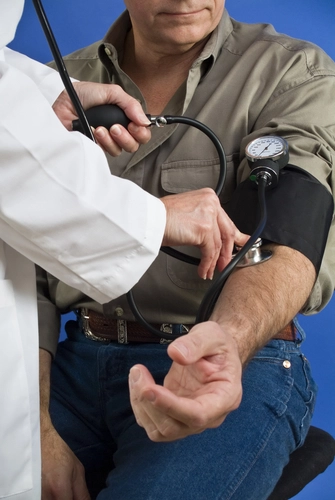EM Coding Alert
Adhere to These Additional Rules for 99211 Success
Don’t mix up 99211 with 99212. Last month, we saw how you can ace your 99211 coding by knowing who can appropriately use the code, always applying incident-to rules, and just reporting 99211 for established patients. Although it’s frequently misused, there’s no reason why you can’t effectively report 99211 (Office or other outpatient visit for the evaluation and management of an established patient, that may not require the presence of a physician or other qualified health care professional. Usually, the presenting problem(s) are minimal. Typically, 5 minutes are spent performing or supervising these services …) in your practice. Let’s look at a few more rules to ensure your 99211 coding success. Rule: See the Differences Between 99211 and 99212 To learn when you would report 99212 (… a problem focused history; a problem focused examination; and straightforward medical decision making …) versus 99211, think back on the example from Maggie M. Mac, CPC, CEMC, CHC, CMM, ICCE, AHIMA-approved ICD-10 CM/PCS trainer and president of Maggie Mac-Medical Practice Consulting in Clearwater, Fla., from last month’s alert: 99211: For a 99211, the physician’s treatment plan states that he wants the patient to come back for a blood pressure check and assess whether the patient is having problems with his medications. The patient returns to the office with improved blood pressure, and his medications are not bothering him. The provider (perhaps the nurse or medical assistant) documents that she saw the patient, took his blood pressure, and the patient is doing fine with his medications. The provider must report all of this information to the physician. Although the physician doesn’t have to see the patient, he must receive the information about the encounter from the provider. The physician who provided the supervision and was in the office that day could then bill the 99211. 99212: For a 99212, take the same patient from above, but now he is having problems with his medication, and his blood pressure is still elevated. The licensed practical nurse (LPN) reports this information to the supervising physician, and the physician drops in, talks to the patient, and does another blood pressure check. The physician may even make a change in the treatment plan — like choosing a different medication. Of course, the LPN will illustrate the components she performed, and the supervising physician will put this additional information into the medical record. Takeaway: If the physician, who has to be present in the medical suite during the patient’s visit, actually sees the patient and documents the service, you could possibly bill a 99212, based upon the information written into the notes. Rule: Remember Medical Necessity is Key Medical necessity plays an important role in appropriately reporting 99211, according to Mac and Jodi Dibble, CPC, medical record coder II of physician services at the Florida Hospital New Smyrna in New Smyrna Beach, Fla. “[With 99211], no key components are required, but the record must show sufficient information to support the reason for the visit,” says Dibble. “The documentation must show the medical necessity of the visit.” Mac emphasizes the vital link medical necessity shares with 99211. “There has to be medical necessity to support an E/M service,” says Mac — just as with all services rendered to patients. Look at the following examples from Mac to better understand what medical necessity is and what it is not. Not medical necessity: A patient comes in with a urinary tract infection. At the next visit, the provider sees the patient and checks the patient’s urine specimen per the physician’s order. In the treatment plan, the doctor indicates that the patient should only receive a follow-up urine specimen check. In this case, there is no medical necessity for the provider to do any additional work, according to Mac. “Just because they take a patient’s vitals doesn’t give the medical necessity to bill the 99211, and that’s a fallacy that has happened over the years,” says Mac. The following example from Mac does support medical necessity. Medical necessity: The patient comes in for a urine recheck, and he tells the provider he is still experiencing symptoms of low back pain, frequency, and urgency. Also, his medication makes him feel nauseous. The provider takes the patient’s vitals, checks his blood pressure, and discusses the information with the physician. The physician doesn’t see the patient, but he does decide what course of action to take, and they can bill 99211. The nurse, LPN, medical assistant, etc., would document all of the information gathered during the encounter. Rule: Don’t Use 99211 as Catchall Code You should never assume that you can bill for 99211 just because the patient has been asked to return for a follow-up or comes to the office for a blood draw or injection, says Mac. Cynthia A. Swanson, RN, CPC, CEMC, CHC, CPMA, senior manager of healthcare consulting for Seim Johnson in Omaha, Neb., echoes Mac’s thoughts. “99211 should not be reported for patients presenting merely for the collection of blood [venipuncture service] for a laboratory test,” says Swanson. “Instead, CPT® code 36415 should be used.” Although the provider may take the patient’s vitals when he gives the patient the injection, this doesn’t necessarily mean you can bill an E/M service, says Mac. To bill a 99211, there has to be medical necessity, meaning a workup of some sort, and just taking the patient’s vitals does not constitute as a workup, adds Mac. Catherine Brink, BS, CMM, CPC, president of Healthcare Resource Management in Spring Lake, N.J., also weighs in on the importance of making sure the service meets the criteria for an E/M service when you report 99211. “Code 99211 will be accepted only when documentation shows that services meet the minimum requirements for an E/M visit,” says Brink. “For example, if the patient receives only a blood pressure check or has blood drawn, 99211 would not be appropriate.”
Related Articles
EM Coding Alert
- Policy Change:
Understand NGS Policy Update on Exam Levels
As of July 1, detailed exams will require 6-7 body areas or organ systems. Recently, [...] - 99211:
Adhere to These Additional Rules for 99211 Success
Don’t mix up 99211 with 99212. Last month, we saw how you can ace your [...] - Smoking Cessation:
Brush Up on ABCs of Smoking and Tobacco-Use Cessation Counseling
See what info our pro says physicians should include in 99406 and 99407 documentation. Smoking [...] - You Be the Coder:
Receive Guidance on 99221 and 99238
Question: Can you bill 99221 and 99238 on the same day under any circumstances? For example, [...] - Reader Question:
Master Telephone E/M Codes
Question: Can you explain when I could correctly report 99441-99443? Florida Subscriber Answer: Codes 99441-99443 represent telephone [...] - Reader Question:
Know When to Use Team Conference Code
Question: Could you give me some insight into 99366? Arizona Subscriber Answer: You would use 99366 (Medical [...]




